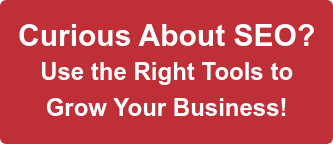Scoprite come utilizziamo HubSpot Content Hub per la SEO, aumentare il traffico organico e ottimizzare i nostri contenuti per il successo.
Intento di ricerca e SEO: come farlo correttamente
Vi siete mai sentiti come se steste dando ai motori di ricerca il trattamento del silenzio? Avete creato meticolosamente i contenuti e ottimizzato ogni dettaglio, eppure il vostro sito web langue nell'abisso della ricerca. Il colpevole? Un intento di ricerca incompreso.

Che cos'è l'intento di ricerca?
L'intento di ricerca, noto anche come intento dell'utente, si riferisce all'obiettivo o allo scopo specifico della ricerca online di un utente. È la scienza che sta alla base della comprensione del motivo per cui una persona digita una particolare query in un motore di ricerca. Riconoscere e interpretare l'intento di ricerca è fondamentale per creare contenuti che rispondano direttamente alle esigenze e alle aspettative degli utenti. Contribuirà a migliorare i tassi di click organici e adaumentare il traffico e le conversioni.
Quando le aziende allineano i loro contenuti web con l'intento che sta alla base delle ricerche degli utenti, si crea una relazione simbiotica. I motori di ricerca, a loro volta, premiano questo allineamento classificando i contenuti più in alto nei risultati di ricerca. Questa connessione garantisce agli utenti di trovare rapidamente le informazioni o le soluzioni più pertinenti, contribuendo a migliorare l'esperienza online.
L'impatto dell'intento di ricerca sulla SEO
Con i loro algoritmi in continua evoluzione, i motori di ricerca sono diventati abili nel decifrare l'intento degli utenti. Attraverso un'analisi sofisticata, i motori di ricerca valutano il contesto, le sfumature linguistiche e la semantica delle query di ricerca. Ciò consente loro di discernere lo scopo sottostante a ciascuna ricerca, classificandola in diversi tipi di intento, come quello informativo, di navigazione, transazionale o di indagine commerciale. Comprendendo l'intento dell'utente, i motori di ricerca mirano a fornire i risultati più pertinenti e validi, migliorando l'esperienza complessiva dell'utente.
I siti web che presentano una corrispondenza precisa tra il contenuto della pagina e l’intento di ricerca ottengono in media un posizionamento organico superiore del 18% rispetto a quelli che non pongono chiarezza sull’intento dell’utente.
La pertinenza è l'elemento che collega l'intento di ricerca a un posizionamento più elevato nei motori di ricerca. Quando le aziende allineano i loro contenuti con l'intento che sta alla base delle query degli utenti, i motori di ricerca interpretano questo allineamento come un segnale di qualità e valore. I contenuti che rispondono con precisione all'intento degli utenti hanno maggiori probabilità di essere considerati validi dagli algoritmi di ricerca, con conseguente miglioramento del posizionamento nelle pagine dei risultati dei motori di ricerca (SERP). Questa connessione è la chiave di volta di una SEO efficace: più il contenuto è pertinente e mirato, maggiore è la probabilità di ottenere visibilità e rilievo nei risultati di ricerca.
Diversi tipi di intento di ricerca
La comprensione dell'intento di ricerca implica la categorizzazione delle query in tipi distinti, ognuno dei quali ha uno scopo unico. Le categorie principali sono:
-
Intento informativo: Gli utenti cercano informazioni o risposte a domande specifiche. Per soddisfare questo intento, è fondamentale creare contenuti che istruiscano e informino.
-
Intento di navigazione: Gli utenti cercano un sito o una pagina web in particolare. L'ottimizzazione per l'intento di navigazione implica la garanzia di una navigazione facile e di un percorso chiaro per gli utenti che vogliono raggiungere la loro destinazione.
-
Intento transazionale: Gli utenti sono pronti ad acquistare o a completare un'azione specifica. Per le aziende con piattaforme di e-commerce o obiettivi di conversione specifici, è fondamentale personalizzare i contenuti per guidare gli utenti attraverso il processo di transazione.
-
Intento commerciale: Gli utenti si trovano nella fase di ricerca, confrontando prodotti o servizi prima di decidere. I contenuti per l'indagine commerciale devono evidenziare i principali fattori di differenziazione e fornire informazioni preziose per influenzare il processo decisionale.
Riconoscere questi tipi di intento consente alle aziende di creare contenuti mirati che rispondano all'obiettivo dell'utente. Ad esempio, un post sul blog può rispondere a un intento informativo, una landing page ben ottimizzata a un intento transazionale o una guida completa al confronto dei prodotti a un intento di indagine commerciale.
Anche se può essere allettante cercare di soddisfare tutti i tipi di intento dell'utente in una volta sola, non è consigliabile. Sebbene la diversità dei contenuti sia fondamentale, distribuire le risorse in modo eccessivo tra i diversi tipi di intento pone diversi problemi.
In primo luogo, ogni tipo di intento richiede un approccio ai contenuti unico. I contenuti informativi richiedono profondità e chiarezza, i contenuti di navigazione necessitano di esperienze utente senza soluzione di continuità, i contenuti transazionali richiedono inviti all'azione persuasivi e i contenuti di indagine commerciale richiedono confronti approfonditi. La gestione simultanea di tutti questi aspetti può diluire la qualità e la rilevanza dei contenuti prodotti.
In secondo luogo, il rischio di fornire un'esperienza utente non all'altezza è significativo. Gli utenti che arrivano a una pagina web con segnali di intento informativo, transazionale e di navigazione contrastanti possono trovarla confusa e disorientata. Questa confusione potrebbe portare a un aumento della frequenza di rimbalzo, a un minore coinvolgimento e, in ultima analisi, a un impatto negativo sulle prestazioni complessive del sito web.
Inoltre, i motori di ricerca possono avere difficoltà a identificare l'obiettivo principale di un sito web quando si trovano di fronte a un'accozzaglia di contenuti che rispondono a diversi tipi di intento. Questa mancanza di chiarezza può ostacolare le classifiche del sito, in quanto i motori di ricerca potrebbero trovare difficile determinare i contenuti più rilevanti per le specifiche query degli utenti.
Infine, le risorse investite per coprire tutti i tipi di intento potrebbero non dare risultati ottimali. Concentrarsi sui tipi di intento più in linea con gli obiettivi e il pubblico target dell'azienda garantisce un'allocazione più efficiente delle risorse, massimizzando l'impatto della strategia SEO.
Identificazione dell'intento di ricerca
L'identificazione dell'intento di ricerca è fondamentale per sviluppare una strategia SEO mirata e di successo. Le aziende possono adottare un approccio multiforme, utilizzando vari strumenti e metriche per ottenere informazioni sulle query e sulle preferenze degli utenti.
Utilizzare la ricerca sulle parole chiave per comprendere le query degli utenti
Gli strumenti di ricerca sulle parole chiave sono preziose risorse per svelare le complessità dell'intento degli utenti. Le aziende possono individuare modelli e tendenze indicativi di specifici tipi di intento analizzando le parole chiave che gli utenti inseriscono comunemente. Questi strumenti rivelano il linguaggio degli utenti e forniscono dati sul volume di ricerca, sulla concorrenza e sulle query correlate. Ad esempio, strumenti come Google Keyword Planner, SEMrush e Ahrefs consentono alle aziende di identificare le parole chiave ad alto rendimento pertinenti al loro settore e al loro pubblico, guidando la creazione di contenuti che si allineano perfettamente all'intento degli utenti.
Analizzare le caratteristiche delle SERP per trovare indizi sull'intento di ricerca
Le pagine dei risultati dei motori di ricerca (SERP) sono ricche di informazioni per decodificare l'intento della ricerca. L'esame delle caratteristiche che accompagnano i risultati ai primi posti rivela ciò che gli utenti si aspettano quando inseriscono una determinata query. Ad esempio, se la maggior parte dei risultati include post di blog informativi, ciò suggerisce un intento informativo. Se le pagine dei prodotti dominano la SERP, ciò segnala un intento transazionale. L'identificazione di questi schemi aiuta le aziende ad adattare i propri contenuti al tipo di intento predominante per una determinata parola chiave. Elementi come i featured snippet, i knowledge graph e i caroselli di immagini possono affinare ulteriormente la comprensione delle aspettative degli utenti, fornendo una tabella di marcia per lo sviluppo dei contenuti.
Determinare l'intento con le metriche di coinvolgimento degli utenti
Le metriche di coinvolgimento degli utenti sono fondamentali per decifrare l'intento di ricerca e forniscono un feedback in tempo reale su come gli utenti interagiscono con i contenuti di un sito web. Metriche come la frequenza di rimbalzo, il tempo di permanenza sulla pagina e la frequenza di clic offrono indicazioni sul fatto che gli utenti trovino i contenuti in linea con il loro intento. Un'elevata frequenza di rimbalzo può indicare una mancata corrispondenza tra le aspettative degli utenti e i contenuti, mentre un tempo prolungato sulla pagina segnala coinvolgimento e rilevanza. Inoltre, l'analisi dei percorsi degli utenti attraverso un sito web può rivelare il viaggio dell'utente, aiutando le aziende a identificare le fasi in cui gli utenti manifestano diversi intenti: raccolta di informazioni, navigazione o transazione.
Potrebbe piacerti anche:
Creare contenuti allineati all'intento di ricerca
Una volta acquisita una solida comprensione dell'intento di ricerca, il passo successivo è creare contenuti che risuonino con gli utenti, soddisfino le loro aspettative e si allineino perfettamente all'intento di ricerca.
1. Meta-titoli e descrizioni convincenti
I meta-titoli e le descrizioni saranno la prima cosa che gli utenti vedranno quando scorreranno i risultati di ricerca, quindi sono fondamentali per convertire la rilevanza dei vostri contenuti. La creazione di meta titoli convincenti implica l'inserimento di parole chiave ad alto impatto associate all'intento di ricerca identificato. In questo modo si aumenta la visibilità della pagina nei risultati di ricerca e si fornisce agli utenti una chiara indicazione che il contenuto risponde alle loro esigenze.
Le descrizioni devono riassumere brevemente il contenuto, invogliando gli utenti a cliccare promettendo informazioni preziose o soluzioni relative alla loro richiesta. In questo modo si crea un'esperienza positiva per l'utente e si incoraggiano i click, allineando le aspettative degli utenti con i contenuti effettivi.
2. Contenuto ottimizzato
L'ottimizzazione dei contenuti implica una comprensione sfumata del tipo di intento e l'adattamento del materiale di conseguenza.
Intento informativo
Quando gli utenti cercano informazioni, la creazione di contenuti approfonditi e autorevoli è fondamentale. Guide complete, articoli su come fare e blog post informativi sono essenziali per rispondere all'intento informativo. I contenuti devono rispondere a domande comuni, fornire approfondimenti e offrire conoscenze preziose. L'inserimento naturale di parole chiave rilevanti nei contenuti aiuta i motori di ricerca a comprenderne la pertinenza. Anche elementi visivi come infografiche o grafici possono migliorare l'accessibilità e il coinvolgimento dei contenuti informativi.
Per esempio, un sito web di assistenza sanitaria che si rivolge a un intento informativo potrebbe produrre articoli sui sintomi, le opzioni di trattamento o le misure preventive per specifiche condizioni mediche. Il sito diventa una risorsa di riferimento per gli utenti che cercano approfondimenti e indicazioni, fornendo informazioni preziose.
Intento di navigazione
L'intento di navigazione implica che gli utenti stiano cercando un sito o una pagina specifica. Per soddisfare questo intento, le aziende devono dare priorità all'esperienza dell'utente e alla facilità di navigazione. Diventano fondamentali strutture del sito chiare e intuitive, inviti all'azione ben visibili e un'interfaccia facile da usare. Una mappa del sito ben progettata o una solida funzionalità di ricerca interna garantiscono agli utenti di trovare rapidamente le informazioni che stanno cercando.
Un esempio potrebbe essere quello di una piattaforma di e-commerce che ottimizza l'intento di navigazione con una homepage facile da usare, una barra di ricerca prominente e una navigazione intuitiva tra le categorie. Questo snellisce il percorso dell'utente, facilitando una navigazione efficiente verso i prodotti o i servizi desiderati.
Intento transazionale e commerciale
Quando gli utenti manifestano un intento transazionale, segnalando l'intenzione di acquistare o di compiere un'azione specifica, la strategia dei contenuti si sposta verso l'ottimizzazione della conversione. Inviti all'azione chiari e convincenti, descrizioni dei prodotti persuasive e un processo di pagamento semplificato diventano punti focali. Per le indagini commerciali, i contenuti devono enfatizzare i confronti tra i prodotti, le recensioni e gli approfondimenti degli esperti per aiutare gli utenti a prendere decisioni informate.
Ad esempio, un rivenditore online che si rivolge a un intento transazionale può utilizzare posizionamenti strategici dei prodotti, offerte a tempo limitato e un processo di checkout senza problemi. Un sito web che si rivolge a un intento di indagine commerciale potrebbe presentare guide complete al confronto dei prodotti, testimonianze dei clienti e recensioni di esperti, per promuovere la fiducia e aiutare gli utenti nel processo decisionale.
Allineando i contenuti alle aspettative degli utenti, le aziende creano un'esperienza senza soluzione di continuità, rafforzando la propria competenza e affidabilità agli occhi degli utenti e dei motori di ricerca.
3. Contenuti informativi e di facile utilizzo
I contenuti informativi e di facile utilizzo sono il fondamento di una strategia SEO di successo. I contenuti devono essere strutturati in modo logico, con titoli, sottotitoli e punti elenco, in modo da renderli facilmente scansionabili per gli utenti che cercano informazioni specifiche. Un layout visivo gradevole migliora l'esperienza dell'utente e incoraggia un impegno prolungato.
Inoltre, i contenuti informativi che aggiungono realmente valore agli utenti posizionano il sito web come fonte autorevole nel settore, contribuendo ad aumentare il posizionamento sui motori di ricerca. Contenuti regolarmente aggiornati e pertinenti fanno sì che gli utenti ritornino e segnalano ai motori di ricerca che il sito è una risorsa dinamica e affidabile.
La creazione di contenuti in linea con l'intento di ricerca non è un'impresa unica. Richiede un approccio sfumato che risponda alle esigenze specifiche degli utenti in base al loro intento.
Padroneggiare l'intento di ricerca per un successo SEO duraturo
Padroneggiare la scienza che sta alla base dell'intento di ricerca è necessario per le aziende che vogliono incrementare la propria presenza online e accelerare la crescita organica. Dalla comprensione dei diversi tipi di intento alla creazione di contenuti che si allineino esattamente alle aspettative degli utenti, le aziende possono elevare le loro strategie SEO a nuovi livelli.
Se le aziende danno la priorità a contenuti informativi e di facile utilizzo e si rivolgono strategicamente ai diversi tipi di intento, migliorano la loro visibilità online e promuovono connessioni significative con il loro pubblico, favorendo in ultima analisi il loro successo nel dinamico panorama digitale.
Questo contenuto è disponibile in:
- Tedesco: Suchintention und SEO - wie man es richtig macht
- Inglese: Search Intent and SEO - How To Get it Right
- Spagnolo: Intención de búsqueda y SEO: cómo hacerlo bien
- Francese: L'intention de recherche et le référencement - Comment y parvenir ?
- Rumeno: Intenția de căutare și SEO - Cum să o faci corect
- Cinese: 搜索意图和搜索引擎优化--如何做到正确无误










Facci sapere cosa ne pensi.